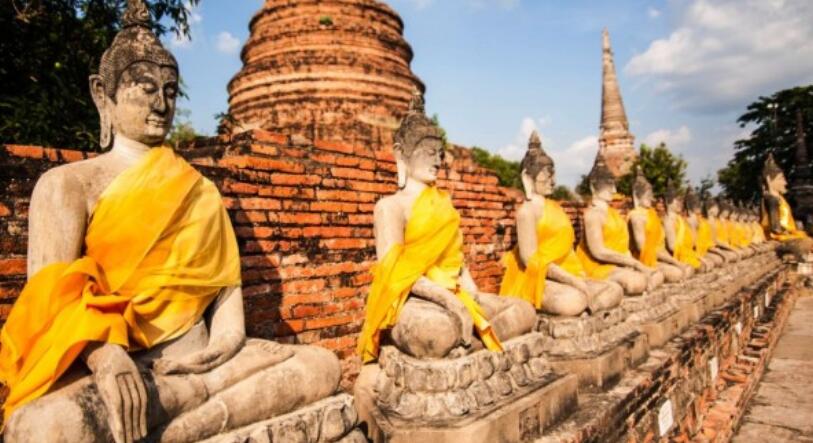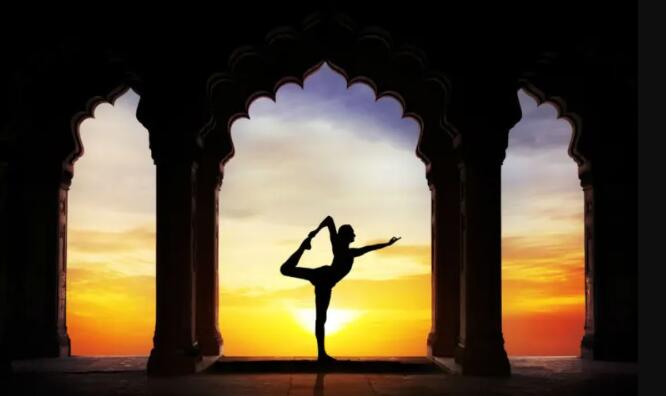Do you practice yoga? If so, you’re in good company! Yoga is one of the most popular forms of exercise in the world.
But where did it come from? And how has it evolved over the years? In this blog post, we will explore the history of yoga and learn about its ancient origins.
We will also discuss the different styles of yoga that are popular today.
So sit back, relax, and get ready to learn about the fascinating history of this popular form of exercise!
The Development of Yoga – Timeline

The practice of yoga is thought to have originated in India over 5,000 years ago.
The first written record of yoga was found in the ancient Hindu scriptures known as the Rig Veda.
These scriptures contain the earliest known mention of the word “yoga.” Yoga was also mentioned in the Upanishads, a collection of philosophical texts dating back to the 6th century BCE.
The first systematic exposition of yoga was the Yoga Sutras of Patanjali, which were written in the 2nd century CE.
In the Yoga Sutras, Patanjali outlines eight stages of yoga practice, known as the “eight limbs of yoga.” These eight limbs are yama (restraints), niyama (observances), asana (postures), pranayama (breath control), pratyahara (sense withdrawal), dharana (concentration), dhyana (meditation), and samadhi ( absorption).
The Yoga Sutras remain the most influential text on yoga to this day. However, many other important texts on yoga have existed throughout the centuries.
These include the Bhagavad Gita, the Hatha Yoga Pradipika, the Shiva Samhita, and the Sivananda Vedanta Darshanam.
1. The Pre-Classical Era (Up to 500 BCE)
The first references to yoga are found in the ancient Hindu texts known as the Vedas. Written between 1500 and 1200 BCE, the Vedas are a collection of sacred texts that contain hymns, rituals, and philosophical teachings.
One of the four Vedas—the Rig Veda—mentions a practice called “yoga,” which some scholars believe to be a reference to an early form of meditation.
The Vedas also contain the earliest known reference to the practice of asana, or yoga postures.
In the Rig Veda, there is a hymn that describes how the sage Vishvamitra taught his students to “stand firm” in order to meditate on the nature of the universe.
This is thought to be the first mention of the practice of asana in yoga.
2. The Classical Era (500 BCE to 400 CE)
Yoga really began to come into its own during the Classical era. This was a time when various schools of thought were flourising in India, including Buddhism and Jainism.
During this era, two influential yoga texts were written: The Bhagavad Gita and The Yoga Sutras of Patanjali.
The Bhagavad Gita is a 700-verse Hindu scripture that is part of the epic Mahabharata. The text discusses topics such as dharma (one’s purpose in life), renunciation, and Krishna (a supreme being).
On the other hand, the Yoga Sutras of Patanjali is a more direct treatise on yoga. It contains 196 verses organized into four chapters (or “books”): Samadhi Pada, Sadhana Pada, Vibhuti Pada, and Kaivalya Pada.
Together, these two texts helped codify many of the principles and practices that we still associate with yoga today.
3. The Post-Classical Era (400 CE to 1500 CE)

During the post-classical era, yoga continued to spread throughout India and beyond its borders.
Much like the Classical era before, this was a time when various schools of thought were burgeoning—such as Tantra and Sufism—and influencing one another profoundly.
This period also saw the rise of Hatha yoga—a type of yoga that focuses on developing one’s physical strength and stamina through the practice of various postures (or “asanas”).
One of the most important texts to come out of this era is the Hatha Yoga Pradipika, which was written by the yoga teacher Svatmarama in the 15th century CE.
The Hatha Yoga Pradipika contains instructions on how to perform many of the asanas that are now commonly associated with modern-day yoga, such as the cobra pose and the shoulder stand.
4. The Modern Era (1500 CE to present day)
Yoga entered its modern era around the turn of the 20th century when currents such as colonialism and Westernization began to impact India on a large scale.
Indian yogis such as Tirumalai Krishnamacharya and Swami Vivekananda played instrumental roles in introducing yoga to the Western world where it has since flourished.
In recent years,many different variations or “schools” of yoga have emerged—such as Bikram yoga and Ashtanga yoga—necking down what was once an extremely diverse practice into more specific sub-disciplines.
Today, yoga is practiced by millions of people around the world and its popularity shows no signs of waning.
Thanks to its ability to promote physical, mental, and emotional well-being, yoga has become an integral part of many people’s lives—a fact that will continue for millennia.
Conclusion
Yoga is a an ancient practice with a rich and varied history. Its origins can be traced back to the Vedas, the oldest sacred texts in India.
From there, it flourished during the Classical era before evolving even further during the post-Classical era.
In more recent times, yoga has been introduced to the Western world where it has enjoyed immense popularity.
With its many benefits, it is easy to see why yoga has stood the test of time and remains as popular as ever today.
